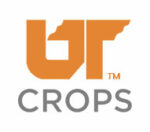LINKS
Drop Cloth (or Shake Sheet) Sampling
A white or black colored drop cloth is sometimes used for sampling various insects in row-planted crops. The drop cloth is made of heavy cloth with 1/2-inch or larger dowels (42 inches long) attached to each side. The width of the cloth varies with row spacing to be sampled, but the drop cloth is usually only used if row spacing is 30 inches or wider. The standard drop cloth length is 2.5 – 3 ft long.
Using a Drop Cloth
Samples are taken by extending the cloth with the dowels parallel to each row and sliding it forward on the ground under the plants, taking care not to disturb the plants. While kneeling between two rows, extend each arm forward parallel with the row on either side and bend the plants over the cloth. The plants are then vigorously shaken to dislodge the insects. Quickly count the insects on the cloth. If using a three-foot long drop cloth, sampling both rows renders a six foot subsample. If preferred, a single row can be sampled.
Taking a Sample
Select sampling sites to give adequate field coverage. A minimum of four subsamples should be taken per field. Additional subsamples may be necessary for larger fields but normally should not exceed eight sites per field. Many thresholds are expressed in the numbers of insects per foot of row (or per six feet of row).
The Efficiency of a Drop Cloth
The efficiency of the drop cloth is influenced by the size of the crop, row spacing, weather conditions, and how a person takes the sample. As with the sweep net, the drop cloth is not intended for all kinds of insects. Drop cloths are much more widely used in cotton because the row spacing of many soybean fields are too narrow . Typically, the drop cloth is a better selection than the sweep net as a sampling tool when plants are relatively tall or for monitoring some immature insects (such as plant bugs).







